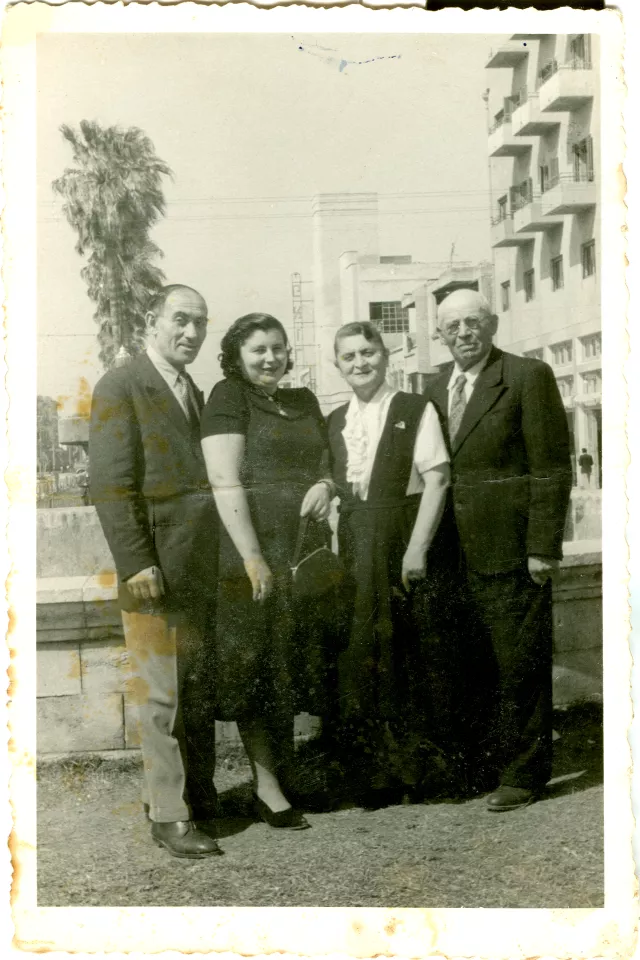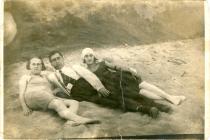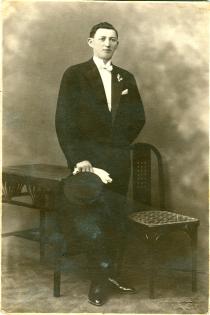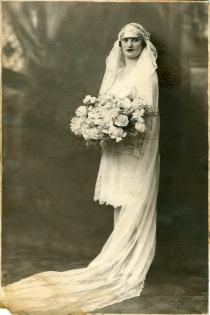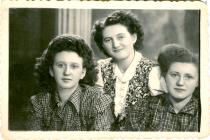Volf and Clara Shaim in Israel
This is my maternal grandfather, Volf Shaim (first from right) with his wife Clara (second from right) after they settled in Israel. Next to them are my grandmother's sister (second from left) and her husband (first from left). I think the picture was taken around 1954.
My maternal grandfather was a bricklayer. I don't think he had any siblings, at least, I can't remember any; we were little children back then. Here's a detail that I recalled yesterday. After World War I, immediately after 1918, he left for America on his own, planning to work as a bricklayer: people probably thought that America was the land of milk and honey. So he left his wife and six or seven children at home and went straight there. Of course, he came back after a short while. I think the reason why he went alone was that he wanted to see for himself what the situation was like: whether he could take his children there and somehow earn his living. I don't know how long it took him to figure out there was no future for him there and return to his children. His absence may have had an influence on his wife, who died right away. As for him, he remarried.
His second wife was called Clara, who I actually met. She lived with him for many years, including the war period: World War II. She didn't have children of her own and raised his very nicely and made sure they all married well. They applied for emigration with their children. But it was a time when most applications were rejected. Because they were pretty old, they got the approval but their children didn't. In 1950 or 1951 they emigrated to Israel. My grandfather, who had worked as a bricklayer in Romania once, believed that he could do this in Israel too and be somebody, despite his age. Since his children were denied the right to emigrate, my grandfather and his wife were all alone and signed up for an old age home. When they left for the station, they rode in a carriage and Clara had a bouquet in her hand. And all the daughters, sons-in-law and their children accompanied them in other carriages, as if it were a wedding procession. We kept in touch with them by mail. Back then we didn't have a telephone.
